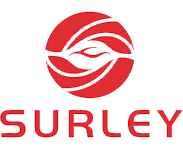In manufacturing industries such as automotive, consumer electronics, aerospace, and instrumentation, painting is not only about giving products an attractive appearance but also about providing essential protection against corrosion and wear. The quality of coating largely depends on the cleanliness of the spraying environment. Even a tiny particle of dust can cause surface defects such as pimples or craters, leading to rework or even scrapping of parts—significantly increasing costs and reducing production efficiency. Therefore, achieving and maintaining a stable dust-free spraying environment is the core goal in modern paint line design. This cannot be achieved by a single piece of equipment; rather, it is a comprehensive clean engineering system that encompasses spatial planning, air handling, material management, and control of personnel and material flows.
I. Physical Isolation and Spatial Layout: The Framework of a Clean Environment
The primary principle of a dust-free environment is “isolation”—strictly separating the spraying area from the outside and other dust-generating areas.
Construction of an Independent Enclosed Spray Booth:
Spraying operations should be conducted inside a specially designed enclosed spray booth. The booth walls are typically made from smooth, dust-free, and easy-to-clean materials such as color steel plates, stainless steel sheets, or fiberglass panels. All joints should be properly sealed to form an airtight space, preventing uncontrolled ingress of contaminated air.
Proper Zoning and Pressure Differential Control:
The entire paint shop should be divided into different cleanliness zones, typically including:
General area (e.g., preparation zone)
Clean area (e.g., leveling zone)
Core dust-free area (inside the spray booth)
These zones are connected through air showers, pass boxes, or buffer rooms.
Key Secret — Pressure Gradient:
To achieve effective airflow direction, a stable pressure gradient must be established:
Spray booth interior > leveling zone > preparation zone > external workshop.
By maintaining a higher supply air volume than return air volume, the cleaner area is kept under positive pressure. Thus, when doors open, clean air flows from high-pressure to low-pressure zones, effectively preventing dusty air from flowing backward into clean areas.
II. Air Purification and Airflow Organization: The Lifeline of Cleanliness
Clean air is the lifeblood of a dust-free environment, and its treatment and distribution determine the cleanliness level.
Three-Stage Filtration System:
Primary Filter: Handles fresh and return air entering the air-handling unit, intercepting ≥5μm particles such as pollen, dust, and insects, protecting the medium filter and HVAC components.
Medium Filter: Usually installed inside the air-handling unit, captures 1–5μm particles, further reducing the load on the final filter.
High-Efficiency (HEPA) or Ultra-Low Penetration (ULPA) Filter: This is the key to achieving a dust-free environment. Before air enters the spray booth, it passes through HEPA/ULPA filters located at the top of the booth. Their filtration efficiency reaches 99.99% (for 0.3μm particles) or higher, effectively removing almost all dust, bacteria, and paint mist residues that affect coating quality.
Scientific Airflow Organization:
Vertical Laminar Flow (Downward Supply with Side or Bottom Return):
This is the ideal and most commonly used method. Clean air, filtered through the HEPA/ULPA filters, flows uniformly and vertically throughout the spray booth like a piston. The airflow quickly pushes paint mist and dust downward, where it is exhausted through floor grilles or lower-side return ducts. This “top-to-bottom” displacement flow minimizes dust deposition on workpieces.
Horizontal Laminar Flow:
Used for certain special processes, where clean air is supplied from one wall and exhausted from the opposite wall. Workpieces must be positioned upstream of the airflow to prevent self-shadowing and contamination.
Constant Temperature and Humidity Control:
The temperature and humidity in the spray environment are crucial for paint evaporation and leveling. The air-handling system should maintain temperature (typically 23±2°C) and relative humidity (typically 60%±5%) consistently. This ensures coating quality and prevents condensation or static-induced dust adhesion.
III. Paint Mist Treatment and Internal Cleanliness: Eliminating Internal Pollution Sources
Even when clean air is supplied, the spraying process itself generates contaminants that must be promptly removed.
Paint Mist Treatment Systems:
Water Curtain/Water Vortex System:
During spraying, overspray paint mist is drawn into the booth’s lower section. Flowing water forms a curtain or vortex that captures and condenses paint mist particles, which are then carried away by the circulating water system. This system not only handles paint mist but also provides preliminary air purification.
Dry-Type Paint Mist Separation System:
A more environmentally friendly method that uses limestone powder or paper filters to directly adsorb and trap paint mist. It offers stable air resistance, requires no water or chemicals, is easier to maintain, and provides more stable airflow—making it a mainstream choice for new production lines.
IV. Management of Personnel, Materials, and Fixtures: Controlling Dynamic Contamination Sources
People are sources of contamination, and materials are potential dust carriers.
Strict Personnel Procedures:
Gowning and Air Shower:
All personnel entering dust-free zones must follow strict gowning procedures—wearing full-body cleanroom suits, caps, masks, gloves, and dedicated shoes. They then pass through an air shower room, where high-speed clean air removes dust attached to their bodies.
Behavioral Rules:
Running and loud talking are strictly prohibited inside. Movement should be minimized, and no unnecessary items should be brought into the area.
Material Cleaning and Transfer:
All parts to be painted must be pretreated in the preparation zone before entering the booth—cleaning, degreasing, phosphating, and drying—to ensure surfaces are free of oil, rust, and dust.
Materials should be transferred through dedicated pass boxes or material air showers to prevent dust ingress when doors are opened.
Optimization of Jigs and Fixtures:
Fixtures used on the paint line should be designed to prevent dust accumulation and regularly cleaned. Materials should be wear-resistant, rust-proof, and non-shedding.
V. Continuous Monitoring and Maintenance: Ensuring System Stability
A dust-free environment is a dynamic system that requires continuous monitoring and maintenance to sustain its performance.
Environmental Parameter Monitoring:
Particle counters should be used regularly to measure airborne particle concentration across different sizes, verifying cleanliness class (e.g., ISO Class 5). Temperature, humidity, and pressure sensors should provide real-time monitoring and alarm functions.
Preventive Maintenance System:
Filter Replacement: Establish a regular cleaning/replacement schedule for primary and medium filters, and replace costly HEPA filters based on pressure differential readings or scheduled inspections.
Cleaning: Implement daily, weekly, and monthly cleaning routines using dedicated cleanroom tools for walls, floors, and equipment surfaces.
Conclusion:
Achieving a dust-free spraying environment in a paint production line is an interdisciplinary technical endeavor that integrates architecture, aerodynamics, materials science, and management. It forms a multi-dimensional defense system—from macro-level design (physical isolation) to micro-level purification (HEPA filtration), from static control (pressure differentials) to dynamic management (personnel, materials, and internal paint mist). Any negligence in one link can undermine the entire system. Therefore, enterprises must establish the concept of “clean system engineering” and ensure careful design, strict construction, and scientific maintenance to build a stable and reliable dust-free spraying space—laying a solid foundation for producing flawless, high-quality coating products.
Post time: Nov-03-2025








